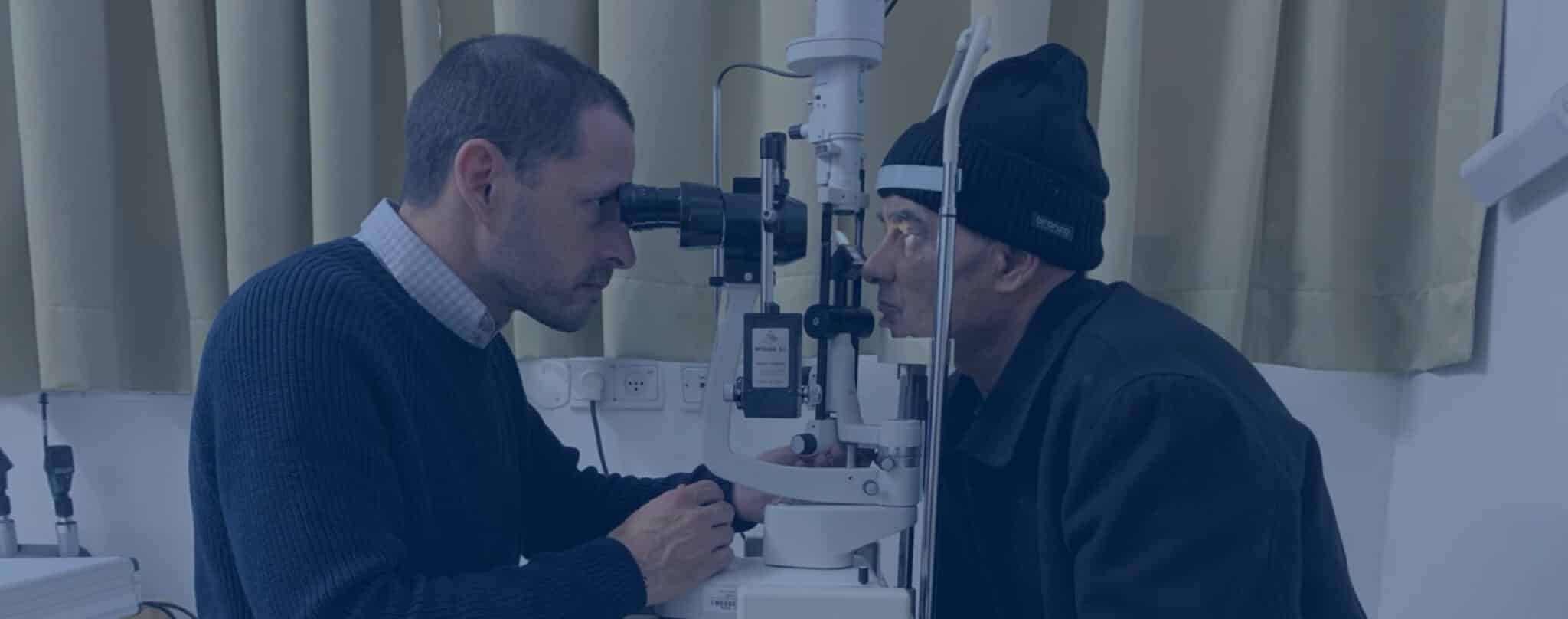Retinoblastoma in Children
Sheba Medical Center in Israel offers comprehensive care to patients diagnosed with retinoblastoma. As the largest hospital in the region, Sheba provides access to a multidisciplinary team of highly skilled medical professionals and pioneering treatments. Our approach encompasses all aspects of patient care, ensuring exceptional treatment for individuals from around the globe.
Patients with Retinoblastoma receive specialized care from a team of experts who have received training at esteemed cancer centers worldwide. Recognizing that each case is unique, our experienced doctors collaborate to accurately diagnose, stage and develop personalized treatment plans for every patient.


Overview
Retinoblastoma is an eye cancer that begins in the retina — the light-sensitive nerve tissue lining the inside of your eye. The retina sends signals through your optic nerve to your brain, where these signals are interpreted as images. It is the most common type of eye cancer in children, comprising about 2% of all pediatric cancers. Fortunately, due to advanced diagnostics and modern treatments, more than 95% of children with retinoblastoma can now be cured.
Causes
The eyes begin to develop in utero, when cells called retinoblasts rapidly multiply to create new cells for the retina. After this early stage of the eye’s development, retinoblasts cease to reproduce and instead grow into mature retinal cells. When this process goes wrong and the retinoblasts grow out of control, the result is retinoblastoma. Usually, the course of events that leads to retinoblastoma starts with a mutation in the RB1 gene, which is the gene that prevents cells from growing uncontrollably.
Retinoblastoma occurs when nerve cells in the retina develop genetic mutations. These mutations cause the cells to continue growing and multiplying when healthy cells would normally die. This accumulating mass of cells forms a tumor. Retinoblastoma cells can then invade further into the eye and nearby structures, and at times also spread (metastasize) to other areas of the body, including the brain and spine.
Risk Factors
- Age: Most diagnoses occur before the child is three years old, and rarely after age six.
- Heredity: Having a parent who had congenital retinoblastoma; however, retinoblastoma may also occur in a child without any family history of the cancer.
- Parental lifestyle: Exposure to chemicals in diesel or gasoline exhaust during pregnancy; the mother not eating enough fruits and vegetables during pregnancy; exposure of fathers to radiation; older age of the father.
Symptoms
The most common signs include:
- Leukocoria: Also called “white pupillary reflex,” is the most typical symptom of retinoblastoma; it refers to when the eye’s pupil looks white when light shines into it (instead of red because of blood vessels at the back of the eye)
- Nystagmus: Involuntary eye movements
- Different colors in each iris
- Eye pain
- Strabismus: A problem with eye teaming, also called “lazy eye”
- Redness of the white part of the eye or around the eye
- Weak vision or a change in vision
Stages
- Intraocular retinoblastoma: The cancer is limited to the eye.
- Extraocular retinoblastoma: The cancer has spread beyond the eye. Orbital retinoblastomas are when cancer has only moved into the eye socket, versus metastatic retinoblastomas, which have spread to other distant organs.
- Recurrent retinoblastoma: The cancer has returned – either to the eye or in other body parts. The stage of retinoblastoma is strongly associated with the prognosis for children who have this cancer. Staging is also significant for designing the most effective treatment program.
Treatment
- Surgery (enucleation) - While it is generally not needed for small retinoblastomas, in cases where the tumor has grown before being detected and if other treatments fail and there is irreversible damage to vision, an enucleation (surgery to remove the entire eye) will be needed.
- Laser therapy - There are different types of laser therapy that may be used for small retinoblastoma tumors, such as photocoagulation and transpupillary thermal therapy.

Our Experts
While retinoblastoma is the most common intraocular malignancy in children, it is still a relatively rare malignancy, as according to the latest estimations only 8,000 new cases are diagnosed every year. Therefore, choosing a hospital with state-of-the-art technologies and expert specialists is critical.
The Ocular Oncology Center at Sheba Medical Center offers advanced treatment for retinoblastoma. Our center is a national and international referral center for the diagnosis and treatment of various ocular tumors and associated conditions. Working in close collaboration with the experts at our Goldschleger Eye Institute, the largest facility for ocular medicine in Israel, we strive to preserve the overall health and vision of adult and pediatric patients with retinoblastoma. Sheba’s compassionate team of retinoblastoma experts will ensure you and your family are well-informed throughout your journey to recovery.
Request a consultation
Sheba Medical Center provides innovative, personalized medical care to patients from around the world. We are the largest, most comprehensive hospital in the Middle East and dedicated to providing advanced and compassionate medicine for everyone. We welcome all cases, including the rarest and the most challenging. Our medical teams collaborate to provide the best possible health outcomes. From your initial inquiry through the long-term follow-up care, we are here for you.
Request a consultation and a Sheba Case Manager will contact you shortly:
